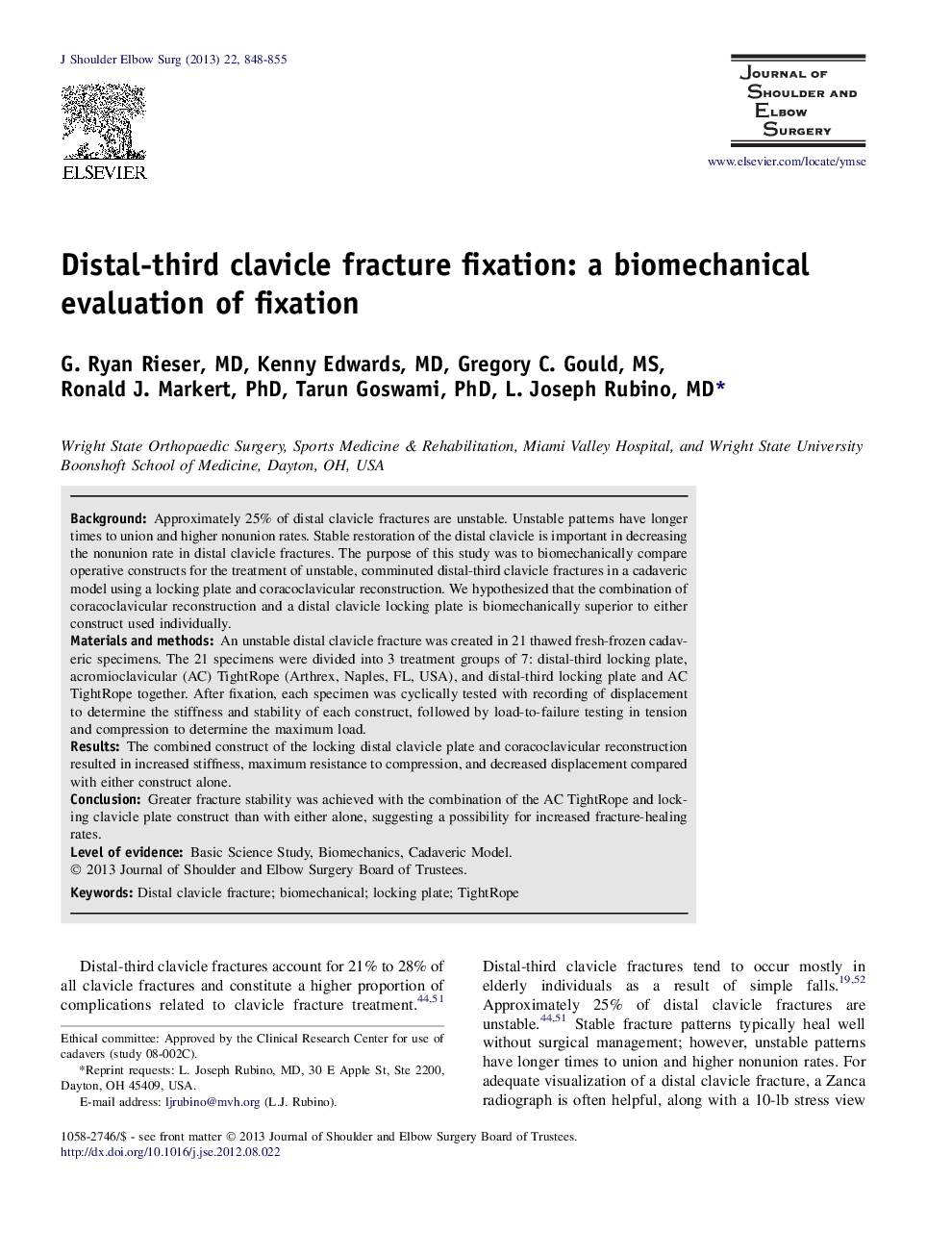| Article ID | Journal | Published Year | Pages | File Type |
|---|---|---|---|---|
| 4073745 | Journal of Shoulder and Elbow Surgery | 2013 | 8 Pages |
BackgroundApproximately 25% of distal clavicle fractures are unstable. Unstable patterns have longer times to union and higher nonunion rates. Stable restoration of the distal clavicle is important in decreasing the nonunion rate in distal clavicle fractures. The purpose of this study was to biomechanically compare operative constructs for the treatment of unstable, comminuted distal-third clavicle fractures in a cadaveric model using a locking plate and coracoclavicular reconstruction. We hypothesized that the combination of coracoclavicular reconstruction and a distal clavicle locking plate is biomechanically superior to either construct used individually.Materials and methodsAn unstable distal clavicle fracture was created in 21 thawed fresh-frozen cadaveric specimens. The 21 specimens were divided into 3 treatment groups of 7: distal-third locking plate, acromioclavicular (AC) TightRope (Arthrex, Naples, FL, USA), and distal-third locking plate and AC TightRope together. After fixation, each specimen was cyclically tested with recording of displacement to determine the stiffness and stability of each construct, followed by load-to-failure testing in tension and compression to determine the maximum load.ResultsThe combined construct of the locking distal clavicle plate and coracoclavicular reconstruction resulted in increased stiffness, maximum resistance to compression, and decreased displacement compared with either construct alone.ConclusionGreater fracture stability was achieved with the combination of the AC TightRope and locking clavicle plate construct than with either alone, suggesting a possibility for increased fracture-healing rates.
